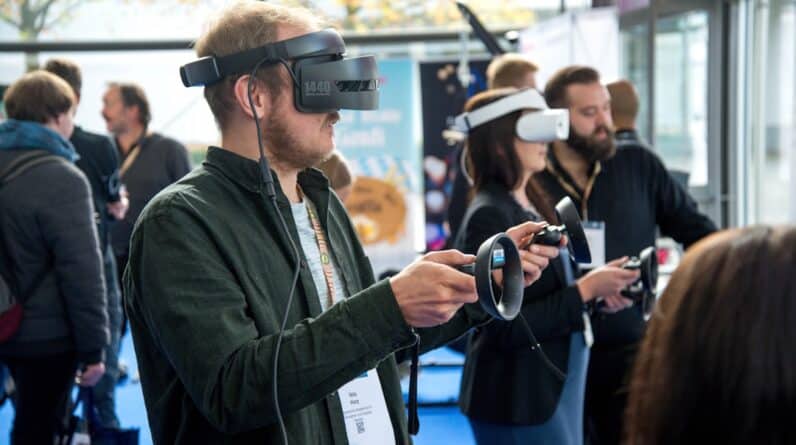As you step into the world of architecture, you may find yourself captivated by the intricate dance between creativity and technology. Artificial Intelligence (AI) has emerged as a transformative force in this field, reshaping how architects conceptualize, design, and execute their visions. The integration of AI into architecture is not merely a trend; it represents a paradigm shift that enhances efficiency, creativity, and sustainability.
By harnessing the power of algorithms and machine learning, architects can now explore design possibilities that were once unimaginable, pushing the boundaries of what is achievable in the built environment. The journey of AI in architecture began with simple computational tools, but it has rapidly evolved into sophisticated systems capable of analyzing vast amounts of data. This evolution allows architects to make informed decisions based on predictive analytics and real-time feedback.
As you delve deeper into this subject, you will discover how AI is not just a tool for architects but a collaborator that can inspire innovative solutions to complex design challenges. The future of architecture is being redefined by this technology, and understanding its implications is essential for anyone involved in the field.
Key Takeaways
- AI is revolutionizing the field of architecture by offering new tools and methods for design, planning, and construction.
- AI plays a crucial role in designing buildings by analyzing data, generating complex designs, and optimizing building performance.
- Sustainable architecture benefits from AI by using data analysis to optimize energy efficiency, material usage, and building performance.
- AI has a significant impact on urban planning by analyzing large datasets, predicting urban growth, and optimizing infrastructure development.
- AI is driving innovation in building materials by analyzing material properties, creating new composite materials, and optimizing material usage for sustainability and performance.
- AI is transforming construction management by optimizing scheduling, resource allocation, and quality control for more efficient and cost-effective construction projects.
- Ethical considerations in AI-driven architecture include issues of privacy, bias, and the impact of automation on the workforce and society.
- The future of AI in architecture holds promise for further advancements in design, sustainability, and construction methods, but also raises questions about the role of human creativity and the ethical implications of AI integration.
The Role of AI in Designing Buildings
When it comes to designing buildings, AI plays a pivotal role in streamlining the creative process. Imagine having access to a virtual assistant that can analyze your design preferences, historical data, and even environmental factors to suggest optimal layouts and materials. This is precisely what AI offers architects today.
By utilizing generative design algorithms, you can input specific parameters such as space requirements, budget constraints, and aesthetic preferences. The AI then generates multiple design options, allowing you to explore a range of possibilities that you might not have considered otherwise. Moreover, AI can enhance collaboration among design teams.
With tools that facilitate real-time sharing and feedback, you can work seamlessly with colleagues across the globe. This collaborative environment fosters creativity and innovation, as diverse perspectives come together to refine designs. As you engage with these advanced technologies, you will find that AI not only accelerates the design process but also enriches it by providing insights that lead to more thoughtful and impactful architectural solutions.
AI and Sustainable Architecture

Sustainability is a pressing concern in today’s architectural landscape, and AI is emerging as a powerful ally in the quest for greener buildings. As you explore the intersection of AI and sustainable architecture, you’ll discover how machine learning algorithms can analyze energy consumption patterns, optimize resource use, and even predict the environmental impact of various design choices. By leveraging this data-driven approach, architects can create buildings that are not only aesthetically pleasing but also environmentally responsible.
One of the most exciting applications of AI in sustainable architecture is its ability to simulate different scenarios for energy efficiency. For instance, you can use AI to model how natural light interacts with your building’s design throughout the day or how different materials affect thermal performance. This level of analysis enables you to make informed decisions that minimize energy consumption and reduce carbon footprints.
As you embrace these innovative practices, you’ll be contributing to a more sustainable future while also enhancing the livability of urban spaces.
The Impact of AI on Urban Planning
Urban planning is another area where AI is making significant strides. As cities continue to grow and evolve, the need for smart planning solutions becomes increasingly critical. With AI’s ability to process vast datasets—from traffic patterns to demographic trends—you can gain insights that inform better decision-making for urban development.
Imagine being able to predict how changes in infrastructure will affect traffic flow or how new housing developments will impact local communities. This predictive capability allows planners like you to create more resilient and adaptable urban environments. Furthermore, AI can facilitate community engagement in the planning process.
By utilizing virtual reality and augmented reality technologies powered by AI, you can create immersive experiences that allow residents to visualize proposed developments before they are built. This not only fosters transparency but also encourages public participation in shaping their neighborhoods. As you navigate the complexities of urban planning with AI tools at your disposal, you’ll find yourself better equipped to address the challenges of modern cities while enhancing the quality of life for their inhabitants.
AI and Building Materials Innovation
The innovation of building materials is another exciting frontier where AI is making waves. As you delve into this aspect of architecture, you’ll discover how machine learning algorithms can analyze material properties and performance data to identify new combinations or entirely new materials that meet specific design criteria. This capability opens up a world of possibilities for creating structures that are not only stronger and more durable but also lighter and more sustainable.
For instance, AI can assist in developing smart materials that respond dynamically to environmental changes. Imagine using materials that can adjust their thermal properties based on temperature fluctuations or self-healing materials that can repair minor damages autonomously. These innovations not only enhance the longevity of buildings but also contribute to reducing maintenance costs over time.
As you explore these advancements in building materials through the lens of AI, you’ll be at the forefront of a movement that prioritizes both performance and sustainability in architectural design.
AI and Construction Management

In the realm of construction management, AI is revolutionizing how projects are planned and executed. As you engage with this technology, you’ll find that AI-driven tools can optimize scheduling, resource allocation, and risk management throughout the construction process. By analyzing historical project data and current conditions, these systems can predict potential delays or cost overruns before they occur, allowing you to make proactive adjustments.
Moreover, AI enhances safety on construction sites by monitoring real-time data from wearable devices and sensors. These technologies can detect hazardous conditions or unsafe behaviors, alerting workers and managers to potential risks before accidents happen. As you incorporate AI into your construction management practices, you’ll not only improve efficiency but also create safer work environments for everyone involved in the project.
Ethical Considerations in AI-Driven Architecture
As with any powerful technology, the integration of AI into architecture raises important ethical considerations that you must navigate carefully. One significant concern is data privacy; as architects increasingly rely on data-driven insights, ensuring that sensitive information is protected becomes paramount. You must be vigilant about how data is collected, stored, and used in your projects to maintain trust with clients and communities.
Additionally, there are questions about bias in AI algorithms. If the data used to train these systems reflects existing inequalities or prejudices, the resulting designs may inadvertently perpetuate those issues. As an architect engaged with AI technologies, it is your responsibility to advocate for fairness and inclusivity in design processes.
By actively addressing these ethical challenges, you can help shape a future where AI serves as a tool for positive change rather than a source of division.
The Future of AI in Architecture
Looking ahead, the future of AI in architecture holds immense promise and potential for innovation. As technology continues to advance at an unprecedented pace, you can expect even more sophisticated tools that will further enhance your creative capabilities. Imagine collaborating with AI systems that not only assist with design but also generate entirely new architectural styles based on cultural influences or historical contexts.
Moreover, as sustainability becomes an even greater priority globally, AI will play a crucial role in developing solutions that address climate change and resource scarcity. You may find yourself at the forefront of designing buildings that are not only energy-efficient but also contribute positively to their ecosystems. The integration of AI into architecture is not just about improving efficiency; it’s about reimagining what is possible in creating spaces that enhance human experiences while respecting our planet.
In conclusion, as you navigate this exciting landscape where architecture meets artificial intelligence, remember that you are part of a transformative journey. Embracing these technologies will empower you to push boundaries, foster innovation, and create a built environment that reflects both human ingenuity and ecological responsibility. The future is bright for those who dare to explore the possibilities that lie ahead in this dynamic field.
AI in Architecture: Designing the Future of Our Built Environment is a fascinating topic that explores how artificial intelligence is revolutionizing the way buildings are designed and constructed. For further reading on the impact of AI in content creation and design tools, check out this article. It delves into how AI is being used to automate writing and design processes, leading to more efficient and innovative outcomes in various industries.
FAQs
What is AI in architecture?
AI in architecture refers to the use of artificial intelligence technology in the design, planning, and construction of buildings and other structures. This can include the use of AI for generating design options, analyzing building performance, and optimizing construction processes.
How is AI being used in architecture?
AI is being used in architecture for various purposes, including generative design, energy analysis, building information modeling (BIM), and construction automation. AI algorithms can help architects and designers explore a wider range of design options, optimize building performance, and streamline the construction process.
What are the benefits of using AI in architecture?
The use of AI in architecture can lead to more efficient and sustainable building designs, reduced construction costs, and improved project timelines. AI can also help architects and designers make more informed decisions by providing data-driven insights and analysis.
Are there any challenges or limitations to using AI in architecture?
Some challenges of using AI in architecture include the need for specialized skills and knowledge to implement and use AI tools effectively, as well as concerns about data privacy and security. Additionally, there may be limitations in the ability of AI to fully replace human creativity and intuition in the design process.
What is the future of AI in architecture?
The future of AI in architecture is likely to involve further advancements in AI technology, leading to more sophisticated and powerful tools for design, analysis, and construction. AI is expected to play an increasingly important role in shaping the future of our built environment, driving innovation and sustainability in the architectural industry.






